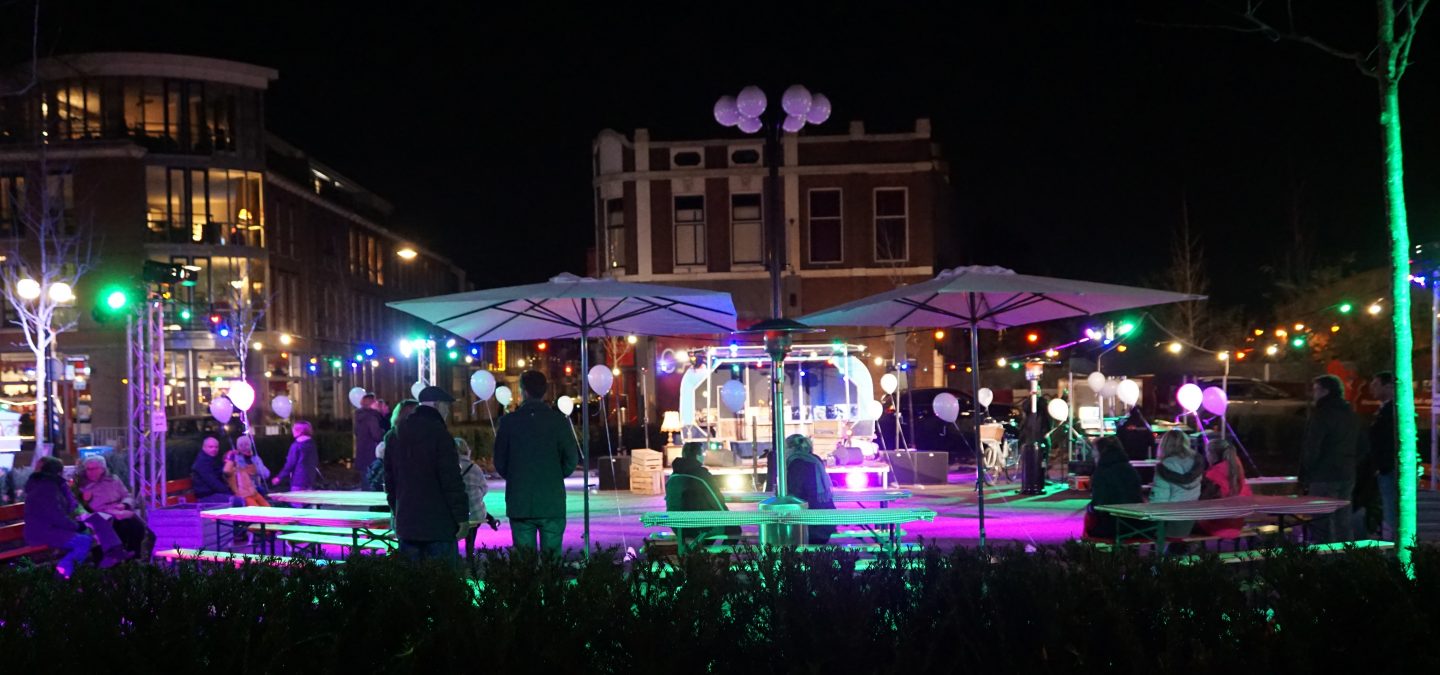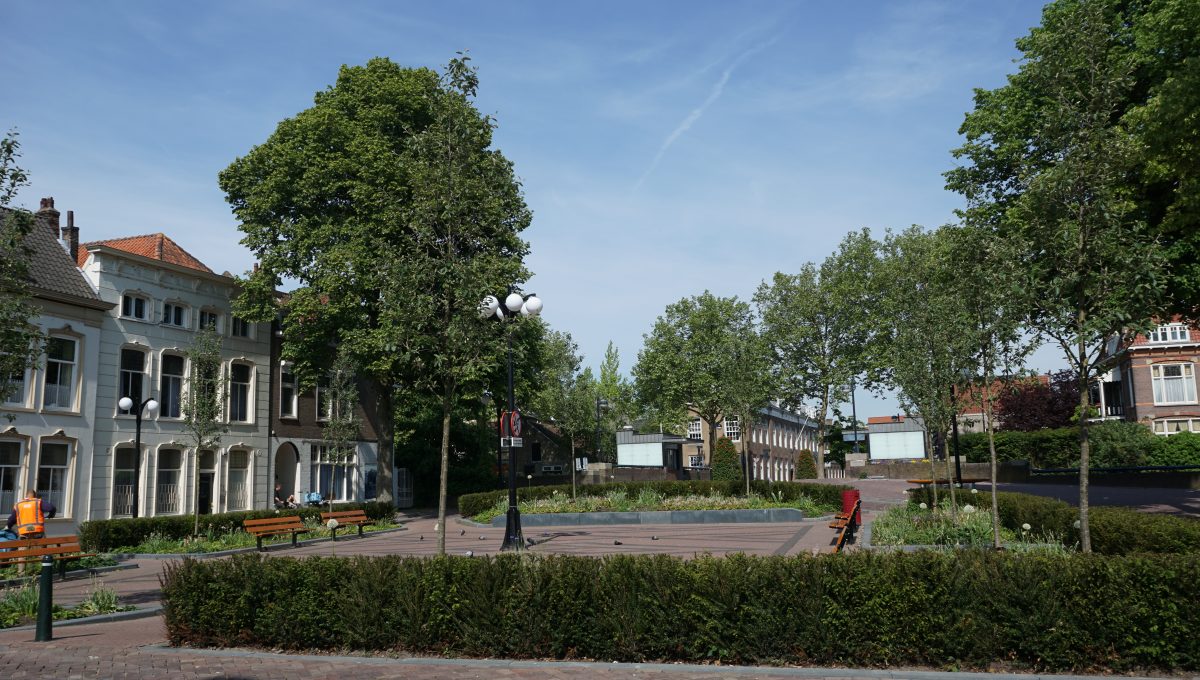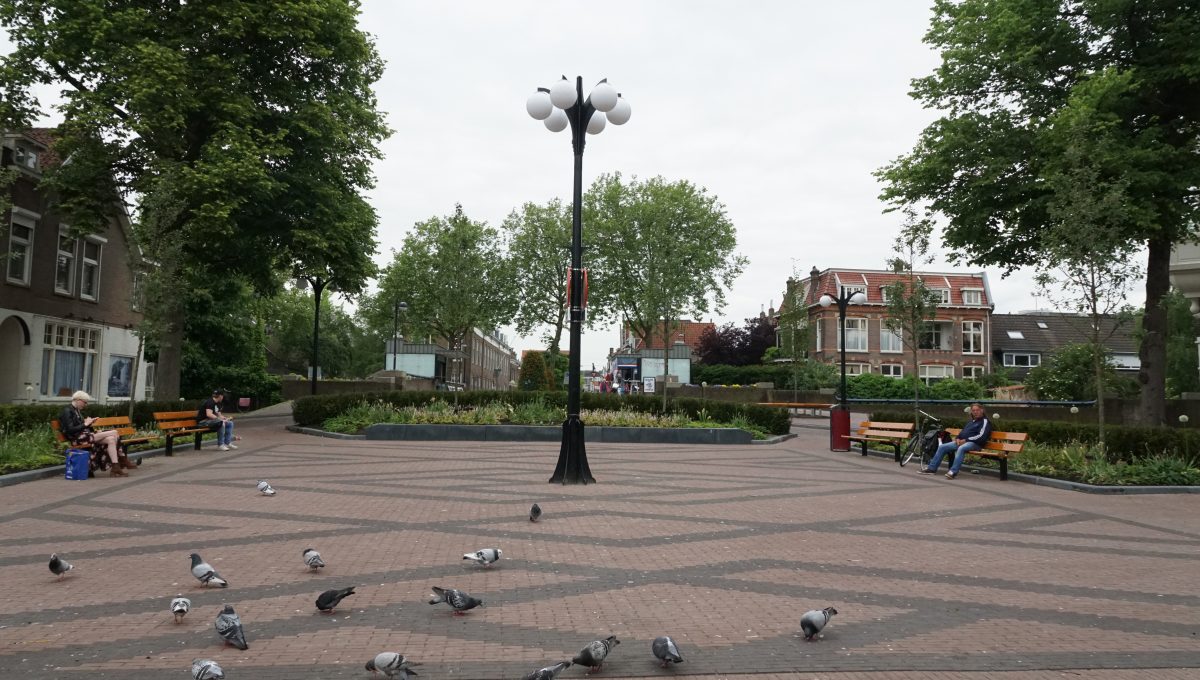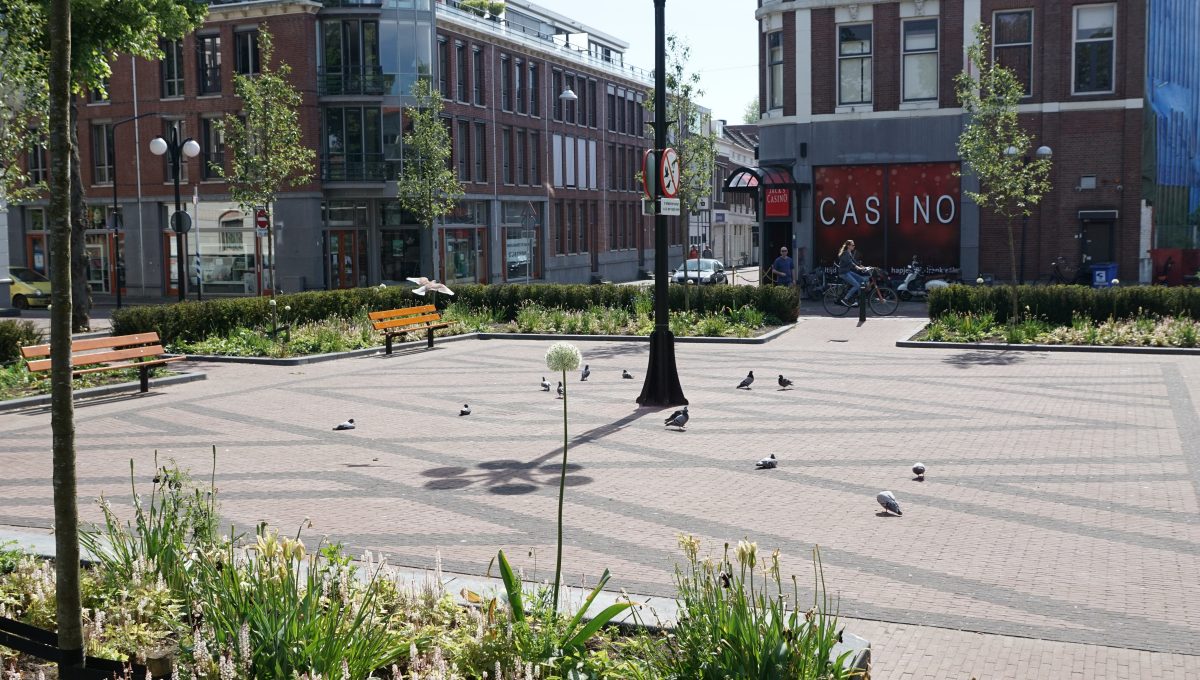
Keep up with our latest news and projects!

‘We don’t have a Zomerhofkwartier – a climate-proof district – in Dordrecht yet; our best projects are yet to come,’ says environmental psychologist and policy advisor Mariska Kien. ‘Nevertheless, I think that our initial experiences of making the city a more beautiful and pleasant place together with the inhabitants is worth sharing.’ As the responsible administrative person, councillor Rinette Reynvaan fully agrees.
Sometime in 2015, the subject of placemaking made it onto the agenda of the Dordrecht city council for the first time, and at the end of that year the first experiment was launched. ‘The administrative agenda indicated that both Vrieseplein and Damplein were in need of maintenance,’ says policy advisor Mariska Kien. ‘An urban planner had even been called in already for Vrieseplein. That’s when the municipality said: “No, we’re going to do this differently. We’re going to give residents and stakeholders a chance to determine what happens.”’
‘As a municipality, we really need to let go of the system that assumes we know what’s best for our citizens,’ adds Councillor of City Management Rinette Reynvaan, explaining why this step was taken. ‘That fits the municipality’s changing role, whereby the ball is in the residents’ court now, and we are increasingly supportive and facilitating partner. Residents and stakeholders often come up with ideas that never would have occurred to us.’
One evening, a working group was set up consisting of people that attended an open house for Vrieseplein. Those who were not in the working group but did want contribute their ideas could approach the sounding board group. The project manager from the municipality attended the meeting, but the chair came from the working group itself.
‘The way the square looks now is something that never would have occurred to the municipality,’ Kien says. ‘Katinka van Haren, an artist that lives on Vrieseplein, liked the idea of making a design for the pavement. After three weeks of sketching and discussing an idea materialised that was ultimately used. The residents also chose new fixtures. The result was a creative one.’



‘On Damplein, placemaking mainly ensured that a decision was finally made, after 20 years of discussions, says Kien. ‘All kinds of proposals had been put forward in the past, sometimes by residents as well, but never following broad consultation. That turned out to be the only way to solve the issue, even though some things could have been done better. During the project, the working group sometimes became too involved and didn’t coordinate with the district often enough. It’s important that the municipality takes a position and continues to guide the process, in order to safeguard this broad consultation, for example.’
‘The city becomes more functional and appealing, and public space begins to function more effectively,’ Kien explains. ‘Putting the user in the spotlight means that more attention will be paid to issues that matter to residents. For example, both pilot projects put much more emphasis on the social function of the squares than had been done in the past. Furthermore, an external evaluation of people’s experiences of Vrieseplein revealed that they feel much more involved in the public space when they can contribute ideas to the development. As even the chair was from the local district, residents and stakeholders had increasing confidence that they could influence decision-making processes. As a result, confidence in the board increased as well. That gave the city new energy.’
‘This is happening in other places in the city as well,’ says councillor Reynvaan. ‘Crabbehoeve is an excellent example. An old kindergarten and playground were wasting away in one of our priority neighbourhoods. Residents asked whether they could do something with that building and land. Of course, you could come up with several objections: “Yes, but it’s an old building, what’s the state of the wiring? Yes, but maybe the roof will leak,” and so on. We talked about that, and for the last year or two now, it is a frequently used meeting place for people in the neighbourhood. Get togethers and meetings are held there, and residents are growing flowers and vegetables in the garden.’
‘As a municipality we really try to sit on the fence and leave as much as possible in the hands of the city,’ says Kien. ‘At the same time, you can’t expect residents to suddenly manage a process such as placemaking – which is relatively new to us as well. I think that you need to guide the process well and have to provide clear parameters in advance. It has to be clear, for example, what the municipality can
contribute financially. We have to be much clearer about that next time: this is how much money is available, and if you want more you’re going to have to find your own resources. And we can help you do that.’
‘Besides, there’s a City Hall here with a huge amount of expertise,’ Reynvaan reiterates. ‘It would be a shame not to use it. The initiative is with the residents, but we regularly meet to share plans and knowledge with each other.’
‘Placemaking creates wonderful opportunities, but at the same time it’s also a struggle sometimes for the municipality, say Kien. ‘For example, there are a huge number of pigeons on Vrieseplein. They’re being fed by passersby, and these creatures are pooing on everything. The residents think that the municipality should deal with that.’
‘This shows how important it is to agree on expectations and opportunities in advance,’ councillor Reynvaan says. ‘If people put great effort into such a square, then perhaps they expect the municipality to do a major clean-up every week. That’s not the case. At the same time we do need to realise: okay, it’s not easy for the residents to clean up the pigeon droppings. If we agree that they clean up the litter, then we can clean the benches and pavements every now and then. Maintenance and management has to increasingly become a joint task.’
Interested? Join The City At Eye Level and share your story!
Discover more